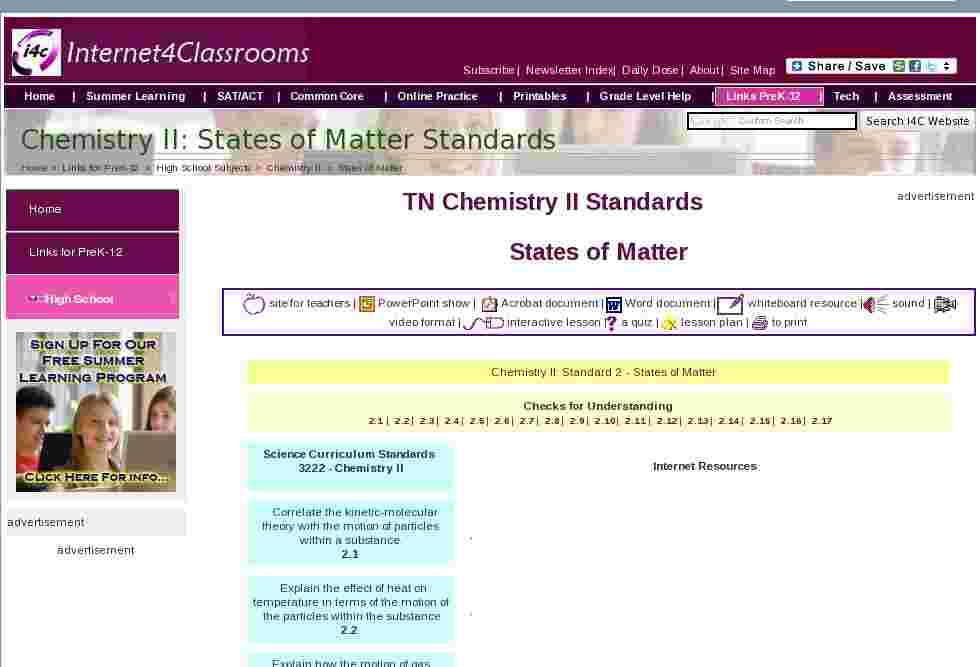Chemistry II: Standard 2 - States of Matter |
|
Science Curriculum Standards
3222 - Chemistry II
|
Internet Resources |
Correlate the kinetic-molecular theory with the motion of particles within a substance.
2.1 |
† |
Explain the effect of heat on temperature in terms of the motion of the particles within the substance.
2.2 |
† |
Explain how the motion of gas molecules affects the pressure.
2.3 |
† |
Explain the effects of temperature changes on the pressure of a gas.
2.4 |
† |
Explain the effects of pressure changes on the volume of a gas.
2.5 |
† |
Solve complex combined and ideal gas law problems to quantitatively explain the behavior of gases.
2.6 |
† |
Determine the rates of effusion of gas molecules using Grahamís Law of Effusion.
2.7 |
† |
Describe conditions that cause real gases to deviate from their ideal behavior.
2.8 |
† |
Determine the types of intermolecular interactions that occur in a pure substance or between the components of a mixture.
2.9 |
† |
Compare the strengths of intermolecular forces between ions, molecules, and ion-molecule mixtures.
2.10 |
† |
Correlate the strength of intermolecular force with the viscosity, surface tension and physical state of the substance at a given temperature.
2.11 |
† |
Explain the role of intermolecular forces in determining the vapor pressure, volatility and boiling point of a substance.
2.12 |
† |
Use a phase diagram to identify the triple-point, critical temperature, and pressure of a substance.
2.13 |
† |
Apply a phase diagram to interpret the effects of temperature and pressure on the phase of a substance.
2.14 |
† |
Calculate the effect of solute concentration on vapor pressure using Raoultís Law.
2.15 |
† |
Calculate the freezing point depression and boiling point elevation of a solution based on appropriate constants, quantities of solute and solvent, and type of solute.
2.16 |
† |
Use the freezing or boiling points of the solution, appropriate constants, and the amount solute or solvent to calculate the molar mass of a solute.
2.17 |
† |
site for teachers |
PowerPoint show |
Acrobat document |
Word document |
whiteboard resource |
sound |
video format |
interactive lesson |
a quiz |
lesson plan |
to print

 Custom Search
Custom Search